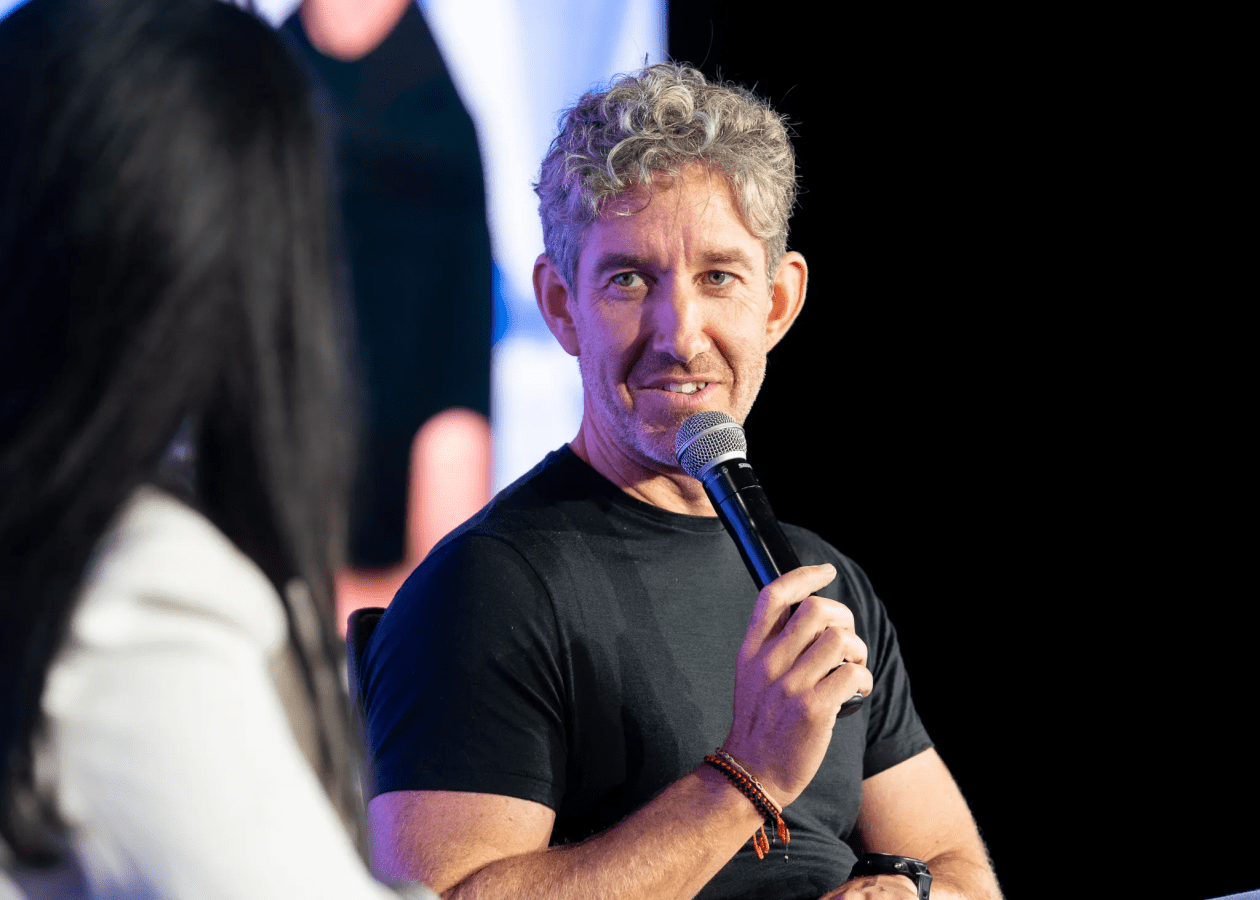Once closely aligned to business objectives, Diversity, Equity and Inclusion (DEI) policies have increasingly focused on championing social justice causes, says Professor Alex Christou of Monash Business School. Has DEI been hijacked? Professor Christou says not necessarily but it needs a rethink if it’s to remain relevant.
BRANDVOICE – SPECIAL FEATURE

By Professor Alex Christou
In recent years, Diversity, Equity, and Inclusion (DEI) has been heralded as a cornerstone of progressive workplace practices. Initially framed as a strategic initiative to drive better business outcomes, the scope of DEI has evolved significantly, sparking debate about whether it has strayed too far from its original purpose.
Has DEI been “hijacked,” or is it simply undergoing a natural evolution to address broader societal challenges?
This question is particularly pertinent in Australia, where the corporate landscape is grappling with balancing economic imperatives with the push for social responsibility.
The answer lies not in choosing one over the other but in realigning DEI to deliver both measurable business outcomes and meaningful societal impact.
DEI’s roots in data
When DEI first gained traction in Australian workplaces, its appeal was deeply rooted in data. Study after study highlighted that diverse and inclusive teams outperform their counterparts. McKinsey’s landmark reports demonstrated a clear link between diversity and profitability, while local research underscored the role of inclusion in fostering innovation and attracting top-tier talent.
The message was clear: DEI was not just a moral obligation but a business necessity. Organisations embraced it to improve decision-making, expand market reach, and create workplaces that mirrored the communities they served. It was about better outcomes—for employees, shareholders, and customers.
Australian businesses saw the potential to unlock new markets by reflecting the diversity of their customers within their workforce. Retailers sought to understand multicultural communities better, financial institutions tailored products to underrepresented demographics, and tech companies pursued inclusive design to create more accessible products. The focus was pragmatic, grounded in the understanding that inclusivity drives innovation and market relevance.
Over time, the narrative around DEI broadened. Movements like #MeToo, Black Lives Matter, and Australia’s reckoning with Indigenous reconciliation added urgency to addressing systemic inequities. DEI was no longer just about optimising performance; it became about redressing historical wrongs and fostering social justice.
The moral imperative was hard to ignore. For instance, Australia’s corporate world faced calls to acknowledge the ongoing impacts of colonisation and embed reconciliation action plans into business strategies. Similarly, gender equity became a pressing issue, with organisations scrutinised for pay disparities and underrepresentation in leadership roles. These were necessary shifts, but they also brought new complexities to the DEI agenda.
Shifting strategies and new challenges

While these goals are admirable, they often shifted DEI from being a data-driven strategy to a moral imperative. Organisations began to prioritise visible displays of commitment, such as symbolic gestures and public declarations, sometimes at the expense of actionable, measurable change. This shift created a perception—fair or not—that DEI had lost its strategic edge.
The expansion of DEI’s scope has not been without challenges. The politicisation of DEI has led to scepticism. Critics argue that DEI initiatives are increasingly ideological, with some perceiving them as disconnected from core business priorities. This polarisation risks alienating stakeholders who view DEI as a distraction rather than a driver of success.
As DEI initiatives attempt to address intersectionality, systemic inequities, and global contexts, organisations often struggle to define clear objectives. The sheer breadth of DEI can dilute its focus, leaving businesses uncertain about how to implement impactful strategies.
Surface level?
Tokenistic efforts, such as one-off training sessions or diversity quotas, may fail to create substantive change. These surface-level actions can undermine employee trust and organisational credibility, making DEI appear performative rather than transformative.
With DEI increasingly at the forefront of corporate discourse, some employees report feeling overwhelmed or sceptical about its effectiveness. Without visible outcomes or alignment with organisational goals, enthusiasm for DEI can wane, leading to disengagement.
Recent examples of companies scaling back DEI initiatives provide valuable lessons for organisations looking to realign their efforts. Meta, formerly Facebook, announced the discontinuation of its DEI programs. An internal memo indicated a shift towards “fair practices to mitigate bias for all backgrounds,” moving away from targeted diversity initiatives.
Similarly, Amazon reassessed and terminated certain DEI programs, aiming to create a more inclusive culture through broader, proven outcomes rather than specific diversity-focused initiatives.
The automotive leader Toyota recently streamlined its DEI efforts, focusing on broader cultural inclusion strategies rather than targeted diversity programs. Toyota cited the need to align DEI with global business priorities and ensure initiatives were universally applicable across its operations.
McDonald’s has reevaluated its diversity goals amid legal challenges and a shifting political climate, highlighting the need for DEI strategies that withstand scrutiny. These examples underscore the importance of aligning DEI efforts with core business objectives while addressing potential legal and political challenges. They also reveal the risks of perceived overreach or performative actions, which can undermine the credibility of DEI initiatives.
DEI’s future
To remain relevant and impactful, DEI must reconcile its dual role as a business strategy and a force for social good. Organisations must articulate how DEI drives core business objectives. This includes linking diversity efforts to key performance indicators such as innovation rates, customer satisfaction, and financial performance. For example, an Australian bank that invests in inclusive hiring practices to better serve multicultural communities can demonstrate a clear link between DEI and market growth.
Clear metrics are essential for assessing impact. These should include both qualitative measures, such as employee engagement and satisfaction, and quantitative ones, like representation across leadership levels or retention rates. By tracking these metrics, organisations can ensure their DEI efforts are delivering tangible benefits.
Superficial initiatives that prioritise optics over outcomes risk eroding trust. Organisations should focus on structural changes, such as inclusive hiring practices, equitable pay policies, and development opportunities for underrepresented groups. Authenticity is key; employees and customers alike can distinguish between genuine commitment and performative gestures.
DEI should not exist in a silo. It must be embedded into business operations, from supply chain decisions to product development and marketing strategies. For example, an Australian retailer that ensures Indigenous suppliers are part of its procurement strategy is not just ticking a box; it is creating a more resilient and inclusive business model.
Leadership buy-in is critical to the success of DEI initiatives. Australian organisations must invest in training leaders to recognise and address unconscious bias, create psychologically safe environments, and champion diversity across all levels of the business. Inclusive leadership sets the tone for organisational culture and ensures that DEI is prioritised at every decision-making level.
To thrive in today’s competitive landscape, Australian organisations must approach DEI through a dual lens: as a driver of business outcomes and as a force for societal good. This requires a shift from reactive, performative actions to proactive, strategic initiatives that deliver measurable impact.
For example, a tech company that integrates accessibility features into its products not only broadens its customer base but also contributes to societal inclusion. Similarly, a financial services firm that invests in programs to develop female leaders is simultaneously addressing a talent pipeline issue and advancing gender equity.
An evolution
DEI has not been “hijacked” so much as it has evolved. While its expanded focus on social justice reflects broader societal priorities, organisations must ensure that these efforts remain grounded in their strategic objectives. By balancing the moral and business cases for DEI, Australian organisations can create workplaces that are not only fairer but also more effective.
Ultimately, DEI is about unlocking potential—in people, organisations, and society. When executed thoughtfully, it delivers better outcomes for everyone. The challenge lies in ensuring that today’s efforts do not lose sight of the data-driven foundations that made DEI compelling in the first place. By doing so, we can honour both its origins and its aspirations, crafting a future where diversity is not just celebrated but strategically leveraged for success.
Professor Alex Christou, Director of Corporate Education, Monash Business School, is a global leader in executive education, with a career spanning both business schools and commercial leadership roles. At Monash Business School, he combines academic expertise with real-world experience to design impactful leadership programs for organisations. Formerly Managing Director for Asia-Pacific at Arianna Huffington’s Thrive Global, Alex specialises in addressing workplace challenges and helps leaders drive cultural transformation, build resilience, and foster sustainable success in their organisations.





